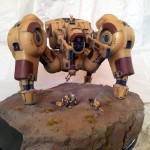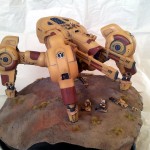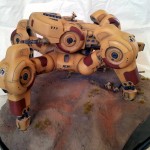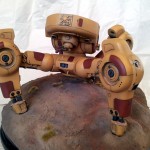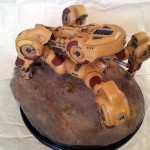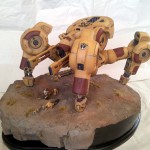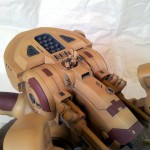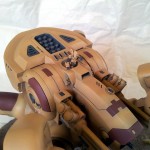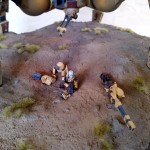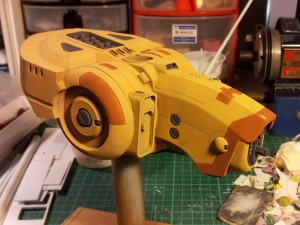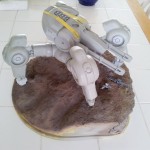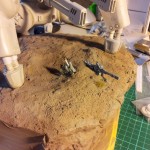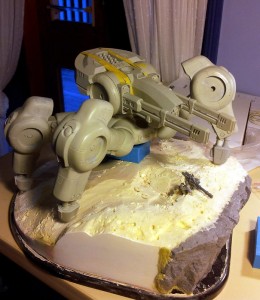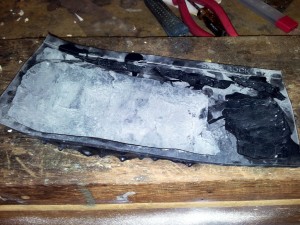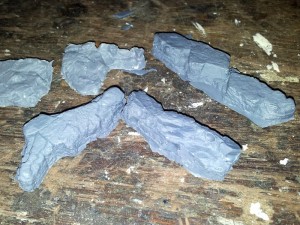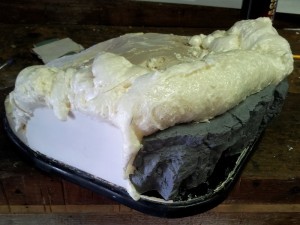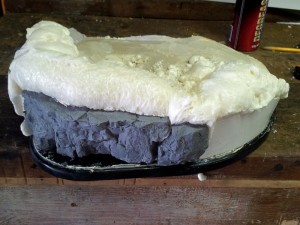Complete: Superheavy Assault Walker
Posted by Mangozac on January 20, 2013Epic does not even begin to describe the journey that has been this project. From such humble beginnings in early 2008, far before Resin Addict was even dreamed of, I embarked on my first scratchbuilding project. The sheer amount I learned along the way was just mind blowing and after two years of construction it was finally completed. The problem was that after such an epic modelling project I found myself burned out and since I didn’t play 40k any more I had no desire to actually build up one of my own!
It was over a year later that I decided I was ready to build up my own SAW kit to proudly display. The problem is that it has taken me almost another two years to finish the damn thing! Due to the size of it just making the base was a mission in itself.
Just like with the original scratchbuild, painting has been a massive educational adventure too. This was my first time using “advanced” modelling techniques such as airbrushing, clear coats, oil paints and using pigments for anything other than rust. I screwed up a lot along the way and the finished model still isn’t perfect, but it’s good enough that for now at least I’m happy to call it done.
So enough jibber-jabber and on to the pictures. Thanks to our beautiful Queensland Summer weather light levels were perfect to take photos this morning. I didn’t take a massive number of shots – I figure I can always take more another time if need be 😉
The next project I’ll be completing is a new BFG ship, followed by painting either a Warhound Titan or an FDV1Mako kit from Filbot (yet to decide which one to do first). I guess I’ll get stuck back into the Centurion again some time this year so I can get it finished off…
Enjoy!





